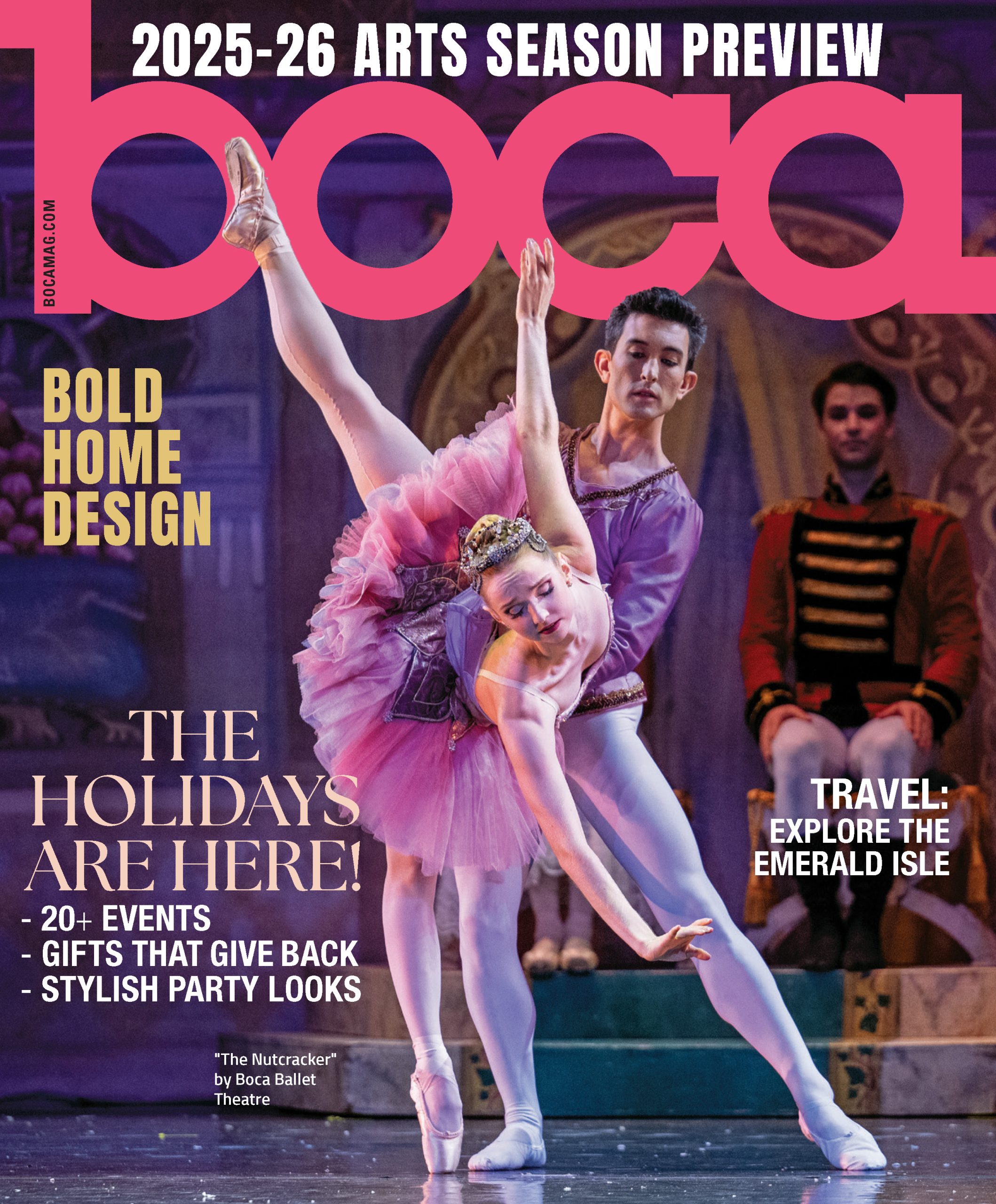Joel Hodgson is many things—comedian, tinkerer, inventor, riffer of some of the worst movies ever made. “Mystery Science Theater 3000,” the television series he created in 1988 for a Minneapolis TV station, allowed him to combine all of these talents into a novel format.
On the show, which soon migrated to Comedy Central and, later, SyFy, Hodgson played Joel Robinson, a janitor trapped on an Earth-orbiting satellite, who is forced by his sadistic captors to watch terrible movies day in and day out. At least his character created company to help him through the torture: robots named Crow, Tom Servo and Gypsy, iconic creations developed by Hodgson himself.
In the show’s structure, which hasn’t changed in more than 30 years, Joel—or future human cast members Mike Nelson or Jonah Heston—and the “bots” sit in the front row of a silhouetted theater, and watch the movie of the week along with us, while trading potshots—i.e., riffing—about the plot, the visuals, the editing, the acting, the characters. When their riffs are on fire, which is most of the time, they make it look easy, which it very much is not.

Though “MST3K” ended its initial television run in 1999, Hodgson continued to riff for a living, as part of his touring project Cinematic Titanic, and he wielded an integral behind-the-scenes influence on the series’ 2017 Netflix reboot, which is now in its second season on the streaming platform.
Over the past couple of years, Hodgson has returned to his roots as not just showrunner of “MST3K” but live performer, riffing in front of multitudes of fans. On Tuesday, Nov. 26, at the Kravis Center, he and the bots will riff on “Circus of Horrors” as part of the “MST3K Great Cheesy Movie Circus Tour;” the following week, on Dec. 4, they’ll riff on “No Retreat, No Surrender” at Parker Playhouse.
Hodgson has announced this tour will be his final one in front of the screen—which is where we pick up my interview.
Why is this your final live tour?
We just got done doing the series for Netflix. Basically you have to go back four or five years ago when we did the Kickstarter campaign. And then we brought back the show and did 20 feature-length episodes for Netflix, and those are currently 100-percent fresh on Rotten Tomatoes. We’re the third-highest-rated show on Netflix right now. It fell to me that it was my job to bring back the brand, and freshen it up and bring new people into it. And this tour was just a chance for me to go around and say goodbye to people in the live arena, because I’ve done the last two tours. So it’s just my final tour, but the show will keep going on indefinitely.
Why is this film, “Circus of Horrors,” great for the tour?
All the movies we use—the coloring book version of them is that they’re bad movies, but they’re really not. They’re misunderstood. They’re kind of forgotten movies. This one’s amazing to me; it’s really well shot. It centers on a circus. There’s a Nazi who’s a plastic surgeon who inherits this circus, and it’s got all these funny, weird elements to it that work really well with what we do.
Talk about the vibe of the live shows; performers often talk about how much they play off the energy they get from a live audience; even though your performances don’t seem to allow for spontaneity, do you still work off that energy?
Yeah, and you have to, because when we make “Mystery Science Theater,” we’re collaborating with a movie to make a new derivative work. And when we do it live, we’re collaborating with the movie and the audience to make a new derivative work. It’s really important. We can’t do it without them; it wouldn’t be any fun without them. You’re in the room with them, so you have to acknowledge them, and they have to acknowledge you, and that’s something really special in the context of what we do.
How did you discover these movies—especially in the early days, before the internet?
Originally, when I created “Mystery Science Theater,” I wanted to do it all with public domain films, because there was no license fee. But they weren’t cared for; we found out that if no one owns them, there’s no one looking out for the prints. So it was hard to find good prints of public domain movies, especially back then. We found that there were film distributors who were used to packaging 22 movies, and 11 of the movies would be movies that were good, and the others would be the kind of movies we wanted. It was very disorienting to them when we went to these film distributors and said, “we just want your crap movies.” They didn’t think anybody had noticed they were vending bad movies. That was always really funny.
Now it’s a bit easier because you can screen movies so easily. Most of the movies we use, you can see at least trailers for them on YouTube. Now we work with distributors that have lots of movies and are willing to license them to us. They go, we represent 100 films; we’ll make a deal with you. Why don’t you look through these 100 films and see if there’s something that will work for you? Then we screen the movies and start by wading through them, and it’s all kind of based on a feeling: You look at it, and go, does this feel like it would be a fun thing to work with?
Is there a riff quota that you have to meet for a movie to work?
Great question … we don’t keep track, but usually it comes out to be 700 or 800 riffs per movie. Jonah, the star of the Netflix series, says, “we dance with the movie.” The movie really tells you what to do. It feels to me like we’re just doing our best to make a movie you would ignore normally, and make it fun and incredibly interesting.
You had a quite recent film last season, a knockoff of “Pacific Rim.” Are bad movies today any different than bad movies in the age of low-grade special effects?
Yeah, they’re very self-conscious now. You can look at “Sharknado” franchise, and “Lavalantula.” To me, it’s a direct reaction to “Mystery Science Theater”—they’re combining what we do and what a movie would do. It’s harder to find sincere low-budget movies, and that’s how we settled on “Atlantic Rim,” because we felt it was pretty sincere.
When you’re writing the riffs, I’m always fascinating with how obscure you go with some of your references. There was one in the latest season to “White God,” a somewhat obscure foreign-language film that I loved. Do you think about a balance between mainstream and esoteric references?
I think so. I think it’s a bit like a seasoning. You have to be careful of how much you use. I don’t know if we ever count them, but I feel like if I notice too many of them, I go, holy cow, this is too dense. So I can’t cite an experience where I said, “we need to clear out these references to foreign movies.”
[But] I’ll give you an example. There’s some dialogue in “Circus of Horrors” where a guy says something about handing something over to a prestigious author. And we had the riff of Hunter S. Thompson. It was doing just OK. But it didn’t quite feel right to me. And I swapped in Ronan Farrow. And it got way bigger laughs. Ronan Farrow was a much better choice, because when you think about Hunter S. Thompson, you go, well, the guy’s funny. He’s not serious. So it doesn’t give them a chance to really understand the contrast in the joke. Once we popped in Ronan Farrow, it was great, because to me, Ronan Farrow is more obscure than Hunter S. Thompson, but maybe he’s not. Maybe he’s more famous at this point.
How do you divvy up which character gets to say which riff?
Usually I get every third joke—Crow, Tom, Joel. And then we’ll move it around based on what people are comfortable with, and especially what voices people like to do. The performers doing Tom, Crow and Gypsy now are all really talented, and I feel they’re far more talented than I am at doing impressions and dialects and voices. I’ve got to work real hard to keep up with them. Often we’ll talk about it and go, who does the best Jimmy Cagney impression? Who does the best Gilbert Gottfried impression? So then you move the order around a little bit. Then there’s certain jokes I can deliver better than others, and so I can do those. It’s almost like we cut the pie in thirds, and then we start moving the pieces around a little.
Netflix could have opened up new possibilities for the show—like variable running times, changes to the format, profanity if you wanted to go there. Why did you did decide to retain virtually the exact format of the broadcast series?
I just felt that as a starting point, it’s been 20 years since the show was on, so I just wanted to land it in the neighborhood where we started. “MST” has its aesthetic from me, and what I’m comfortable with. If you notice the other people that work on the show, when they’re not doing “MST,” they can do anything content-wise, and they often do. For example, Hampton Yount, who does Crow, is a real cutting-edge comic, and does content we would never do on the show.
Part of that is because there’s puppets in the show, and it’s an all-ages show. I feel an obligation, as a parent, to do that. It’s real cynical, when you think about it, because it’s just so juvenile to pick up a puppet and do adult material. To me, it’s riddled with problems. It’s like doing a dirty cartoon. You’re making pornography as accessible as possible to children. I meet a fair amount of people that do that, and I don’t always praise it.
I guess the exception would be incredibly great cartoons that do that, like “Rick and Morty.” It’s profoundly great, and I’m saying that because Dan Harmon and Justin Roiland are friends of mine, and they wrote on “Mystery Science Theater.” Also, “South Park” is astonishing with some of the things they’re able to do. So I guess that rule has some exceptions. Now that I think about it, I probably have to retract my answer and just say, “it’s not my thing.”
Tickets are available for the Nov. 26 Kravis Center performance and the Dec. 4 Parker Playhouse performance—each one featuring a riff on a different film! Pick them up at mst3klive.com.







